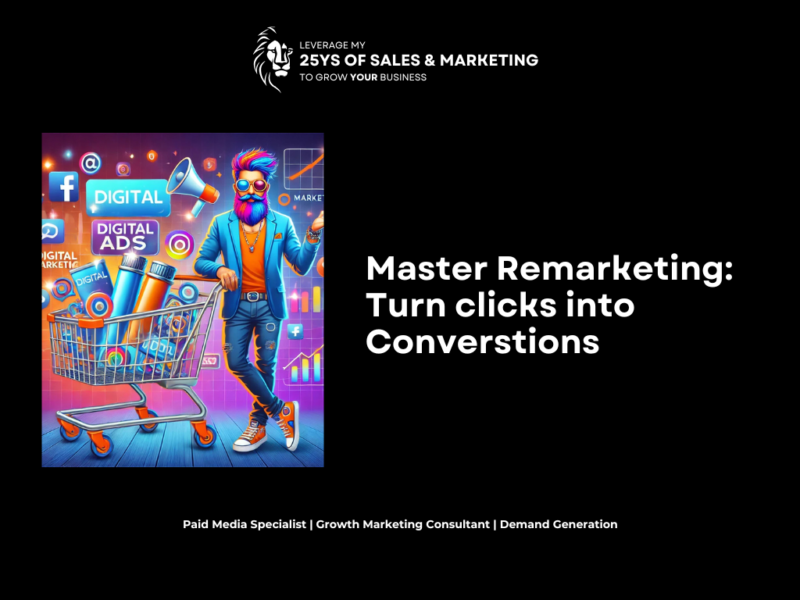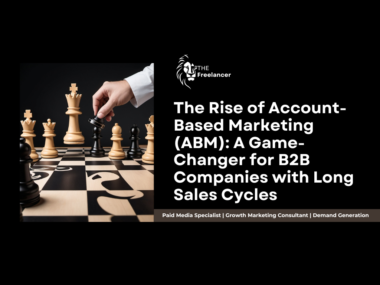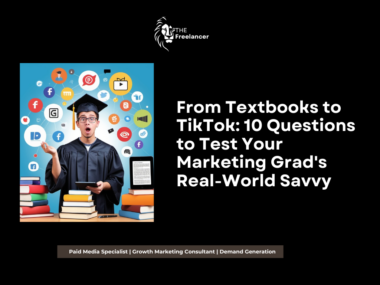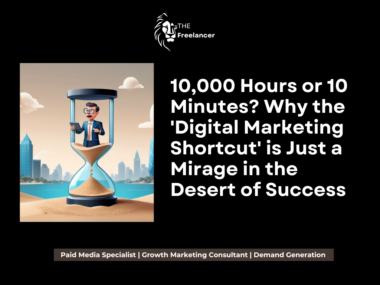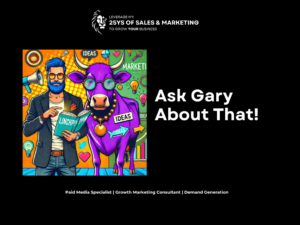Remarketing is a cornerstone of digital advertising, enabling businesses to reconnect with potential customers who have already interacted with their brand. However, running a successful remarketing campaign requires more than setting up ads and hoping for conversions. To truly harness the power of remarketing, you must dive deep into audience segmentation, personalisation, frequency management, ad formats, and exclusions. This comprehensive guide will not only cover these strategies but also delve into the technical aspects that can elevate your remarketing campaigns from good to exceptional.
1. Segment Your Audience for Precision
Audience segmentation is the foundation of any successful remarketing campaign. By dividing your audience based on specific behaviours, you can create highly targeted campaigns that address unique needs and motivations.
Key Segmentation Strategies
- Website Behaviour Segmentation: Use tools like Google Ads and Facebook Pixel to track user behaviour on your website. Segment users into groups such as:
- Customer Lifecycle Segmentation: Identify where users are in the customer journey. For instance:
- Engagement-Based Segmentation: Use engagement data from social media, email campaigns, or other touchpoints to create audience groups based on interaction levels. Tools like HubSpot or Salesforce can integrate engagement metrics into your segmentation strategy
Technical Implementation
- Google Analytics Audiences: Use Google Analytics to define remarketing audiences based on custom dimensions and metrics, such as session duration, pages per session, or eCommerce data like revenue per user.
- Facebook Custom Audiences: Upload customer lists or use the Facebook Pixel to create dynamic audiences based on website activity, such as “Added to Cart but Did Not Purchase.”
- Dynamic Segmentation with CRMs: CRMs like HubSpot or Salesforce allow real-time segmentation using data from multiple channels, providing a unified view of your audience.
2. Create Personalised and Dynamic Ads
Personalisation is the key to driving engagement in remarketing campaigns. Dynamic ads, in particular, allow you to display content that adapts to the user’s past behaviour.
Best Practices for Personalisation
- Dynamic Product Ads (DPA): Platforms like Facebook and Google Ads allow you to showcase the exact products users viewed or added to their cart.
- Tailored Messaging: Address user pain points or hesitations directly. For example:
- Localised Ads: Use geographic data to personalise ads for local markets, showcasing relevant offers or locations.
Technical Implementation
- Google Ads Dynamic Remarketing:
- Facebook Dynamic Ads:
- Third-Party Tools: Leverage tools like AdRoll or Criteo to create dynamic ad campaigns that integrate seamlessly with multiple platforms and offer additional features like advanced AI-based personalisation.
3. Set Frequency Caps to Avoid Ad Fatigue
Ad fatigue occurs when users see the same ad too often, leading to diminishing returns and potential annoyance. Frequency caps help manage the number of impressions each user receives.
Best Practices for Frequency Management
- Balance Frequency and Reach: While high-frequency ads can reinforce your message, excessive exposure may backfire. Aim for 3-5 impressions per user per week, depending on the campaign goals and industry.
- Rotate Ad Creatives: Introduce multiple variations of ad creatives to keep your audience engaged.
- Monitor Engagement Metrics: Keep an eye on click-through rates (CTR) and conversion rates. A drop in engagement might signal ad fatigue.
Technical Implementation
- Google Ads Frequency Caps: In Display campaigns, set frequency caps directly in the campaign settings to limit daily, weekly, or monthly impressions per user. Use automated bidding strategies like Target ROAS or Enhanced CPC to optimise frequency dynamically.
- Facebook Ads Frequency Management: Monitor the “Frequency” metric in Ads Manager. Use campaign budget optimisation (CBO) to distribute spend across ad sets effectively, reducing the risk of overexposure.
- Programmatic Platforms: Tools like The Trade Desk or DV360 allow granular frequency capping across multiple channels, ensuring a consistent user experience.
4. Test Multiple Ad Formats and Channels
Testing various ad formats and platforms is crucial for identifying what resonates with your audience. Different users may respond better to specific types of content or delivery methods.
Ad Formats to Explore
- Carousel Ads: Showcase multiple products or features in a single ad unit.
- Video Ads: Use short, engaging videos to capture attention and build trust.
- Static Banners: Create eye-catching designs with compelling calls to action (CTAs).
- Interactive Ads: Incorporate elements like polls, quizzes, or swipeable content to increase engagement.
Cross-Channel Strategy
- Google Display Network (GDN): Reach users on a vast network of websites and apps.
- Facebook and Instagram: Leverage visual storytelling and robust targeting options.
- LinkedIn: Ideal for B2B remarketing, offering audience targeting based on job title, industry, and more.
- Programmatic Advertising: Platforms like AdRoll and Criteo provide advanced targeting and multi-channel integration.
Technical Implementation
- A/B Testing: Use tools like Google Optimise or Optimisely to test ad creatives, headlines, and CTAs.
- Cross-Channel Attribution: Implement UTM parameters and track performance across channels using tools like Google Analytics or Mixpanel.
- Creative Management Platforms: Use tools like Canva or Adobe Creative Cloud to streamline ad creation and ensure consistency across formats.
5. Use Exclusions to Keep Campaigns Efficient
Excluding certain audiences ensures your campaigns remain focused and cost-effective. For example, avoid targeting recent purchasers or users who have already converted.
Key Exclusion Strategies
- Exclude Converters: Create audiences based on completed purchases and exclude them from active campaigns.
- Exclude Non-Engagers: Remove users who haven’t interacted after multiple impressions.
- Exclude Low-Value Segments: Focus on high-intent users by excluding segments with low engagement or high bounce rates.
Technical Implementation
- Google Ads Audience Exclusions: Use the “Exclusions” tab in Audience Manager to exclude specific groups like recent buyers or high-frequency users.
- Facebook Ad Exclusions: Use Custom Audiences to exclude specific actions, such as recent purchasers or app installers.
- Advanced CRM Integration: Sync your CRM data with ad platforms to automate exclusions based on real-time customer interactions.
Advanced Remarketing Techniques
- Predictive Remarketing: Use machine learning models to predict which users are most likely to convert and prioritise them in your campaigns.
- Lookalike Audiences: Extend your reach by targeting users similar to your high-value segments. Platforms like Facebook and LinkedIn offer robust lookalike audience tools.
- Sequential Remarketing: Create a narrative by serving ads in a specific sequence, guiding users through the funnel with progressively tailored messaging.
- Real-Time Bidding (RTB): Use programmatic advertising platforms to bid on impressions in real-time, ensuring your ads reach the right users at the right moment.
Conclusion
Running a successful remarketing campaign requires a mix of strategic planning, technical expertise, and continuous optimisation. By segmenting your audience, personalising ads, managing frequency, testing formats, and leveraging exclusions, you can create highly effective campaigns that drive results.
Invest in the right tools and platforms, and don’t be afraid to experiment and refine your approach. Remarketing isn’t just about retargeting—it’s about re-engaging your audience with precision, relevance, and impact.
